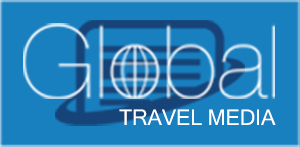![]() In an illuminating revelation, the Global Business Travel Association (GBTA) has unveiled its comprehensive study, “GBTA U.S. Economic Impact Study: Business Travel’s Impact on Jobs and the U.S. Economy.” This groundbreaking report details how business travel is a significant segment of the travel industry and a substantial pillar of the U.S. economy. According to the study, business travel was responsible for nearly 2% of the U.S. GDP in 2022, contributing $421.1 billion in expenditures and $119 billion in tax receipts.
In an illuminating revelation, the Global Business Travel Association (GBTA) has unveiled its comprehensive study, “GBTA U.S. Economic Impact Study: Business Travel’s Impact on Jobs and the U.S. Economy.” This groundbreaking report details how business travel is a significant segment of the travel industry and a substantial pillar of the U.S. economy. According to the study, business travel was responsible for nearly 2% of the U.S. GDP in 2022, contributing $421.1 billion in expenditures and $119 billion in tax receipts.
Economic Powerhouse: The Numbers
For every 1% growth in business travel, the U.S. economy sees a ripple effect of nearly 60,000 jobs, $2.9 billion in wages, $1.2 billion in tax revenue, and $4.8 billion in GDP. The U.S. leads globally in business travel spending, reinforcing its role as a crucial driver of economic health.
The economic impact study reveals that for every dollar spent on business travel, $1.15 is returned to the U.S. economy as net-new GDP. This multiplier effect underscores the industry’s pivotal role in economic growth and stability.
Employment and Industry Insights
The business travel industry supported 6 million jobs in 2022, representing 3.5% of total U.S. employment. The sector’s employment footprint is diverse, with 38% of jobs in food services, 19% in accommodations, and 11% in transportation and warehousing.
Behavioural and Spending Patterns
Understanding the profiles of U.S. business travellers adds depth to the study’s findings. In 2022, 429.9 million business trips were undertaken, with 67% for transient purposes like sales, client services, government, and military travel. The remaining 33% covered conference and event travel.
Business travellers are now spending longer on the road, averaging 4.1 days per trip in 2022, up from 3.3 days in 2017. The average expenditure for each trip was $632, with lodging accounting for the largest share at $214.
Demographics and Trends
The average age of U.S. business travellers is 44.3, with a significant portion earning below $50,000 annually (33.9%) and above $100,000 (31.5%). Blended travel, combining business and leisure, made up over a third of all travel, with women more likely than men to extend business trips for leisure.
State-wise Spending
The top 15 states for business travel spending accounted for 65% of total U.S. expenditures, led by California ($35.62 billion) and New York ($23.31 billion). Nevada showed the highest ratio of business travel spending to GDP, with $6 billion contributing 3.2% to the state’s GDP.
Future Projections
Looking ahead, GBTA forecasts that U.S. business travel spending will continue to surge, anticipating a 7% increase above 2019 in 2023. Globally, business travel spending is expected to surpass $1.5 trillion by 2024, highlighting the industry’s robust recovery.
Expert Commentary
Suzanne Neufang, CEO of GBTA, emphasized the critical importance of business travel: “The data shows that business travel is a substantial contributor to the health of the U.S. economy and a key driver for the global economy. Business travel supports millions of jobs and delivers billions in tax revenue, making it imperative for policymakers to consider the industry’s impact when devising economic policies and to prioritize sustainable solutions.”
The GBTA study unequivocally demonstrates the profound economic contributions of the business travel sector. As the industry rebounds, its role in sustaining jobs, generating tax revenue, and driving GDP growth remains indispensable. Policymakers and business leaders must recognize and support this vital industry to ensure economic prosperity.
Download the complete GBTA U.S. Economic Impact Study here.
For more information about GBTA Research, visit GBTA’s Research Page or contact research@gbta.org.
Written by: My Thanh Pham




















